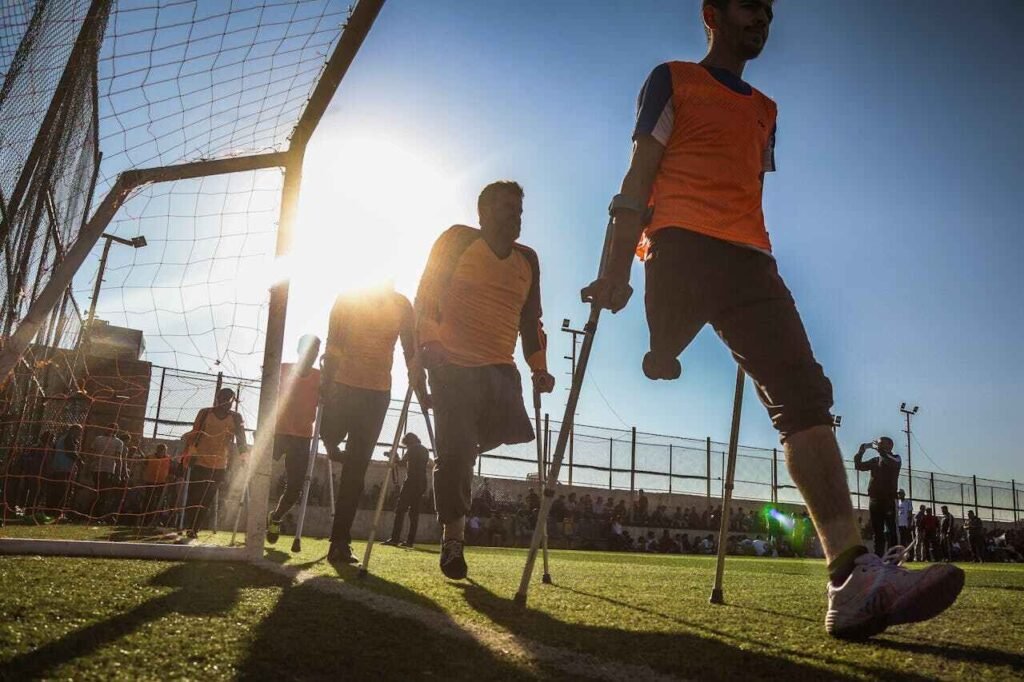Indian summers are intense. The heat, humidity, and long days make even simple tasks feel exhausting. For people using upper-limb prosthetics, these conditions can add another layer of challenge—sweat inside the socket, moisture buildup under the glove, and discomfort from heat-sensitive materials.
The truth is, most prosthetic hands were designed in cooler climates. In India, where temperatures can rise above 40°C, comfort and durability depend on how well a prosthetic can handle heat, humidity, and sweat.
That’s where waterproof and sweat-resistant prosthetic hands come in. These modern designs are built not just to survive the summer—but to help users move confidently through it. They let you work, travel, cook, and live normally without worrying about moisture damage or odor buildup.
At Robobionics, we’ve spent years designing and testing prosthetic hands that meet India’s real environmental conditions. This article explores everything you need to know about waterproof and sweat-resistant prosthetics—from materials and design features to care routines and lifestyle adjustments.
By the end, you’ll understand how to choose the right prosthetic for the season, how to protect it daily, and how to make your summer routine more comfortable, active, and confident.
Understanding the Challenges of Heat and Sweat for Prosthetic Users
The Indian Summer Climate and Its Effect on Prosthetics
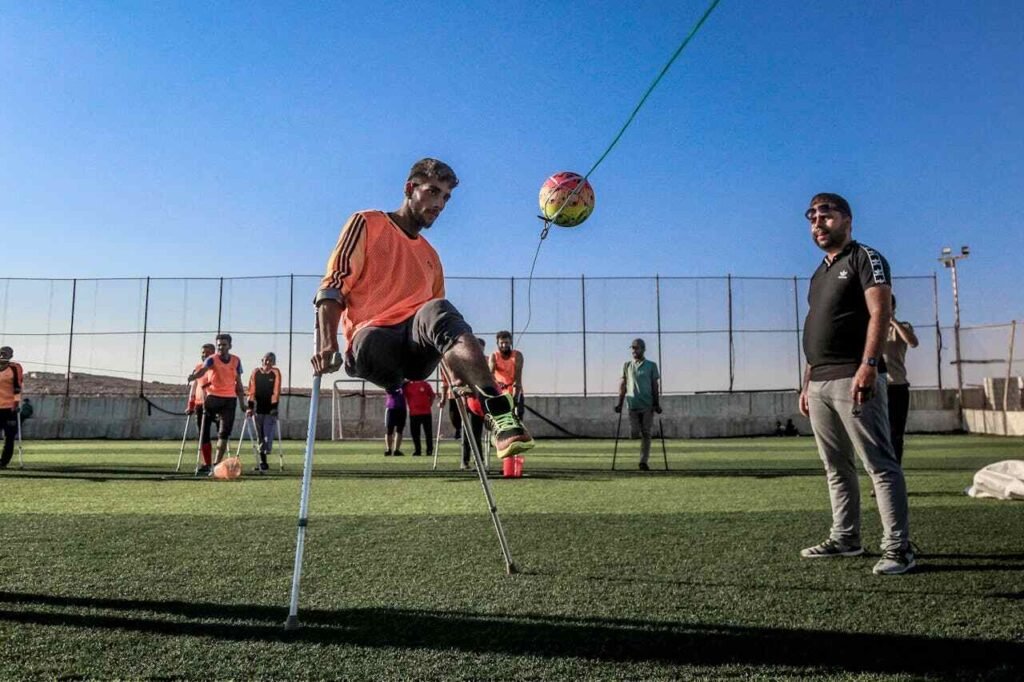
Indian summers are unlike any other. The combination of dry heat in the north and humid moisture in the south creates an environment that tests both the body and the devices it relies on.
For prosthetic users, this means constant exposure to sweat, dust, and moisture. While natural limbs can regulate temperature through sweat evaporation, prosthetic sockets trap heat. This leads to discomfort, slippage, and sometimes even skin irritation.
Prosthetic materials that perform well in cooler climates can soften, expand, or develop odor under Indian summer conditions. That’s why climate-specific adaptation is essential for long-term comfort and durability.
Sweat and Skin Friction
Sweat is a natural cooling mechanism, but inside a prosthetic socket, it can become problematic. When moisture builds up, it reduces the friction between the skin and the liner. This makes the socket feel loose and can affect stability during daily movement.
Moreover, constant friction from trapped moisture can cause redness, rashes, and even fungal growth. These are not just minor irritations—they can interrupt usage and reduce the prosthetic’s lifespan.
Choosing a sweat-resistant design or adding proper ventilation in the socket helps prevent these issues before they start.
The Odor and Hygiene Factor
Sweat and humidity create the perfect environment for bacterial buildup. When bacteria mix with residual moisture in the liner or socket, they cause unpleasant odors.
This is not only uncomfortable but can also make users self-conscious in social or professional settings. Regular cleaning helps, but in hot climates, even daily maintenance might not be enough if the prosthetic isn’t built with breathable, quick-drying materials.
Modern waterproof prosthetics solve this problem with antimicrobial linings and ventilation channels that keep both the limb and the socket fresh throughout the day.
Effect of Heat on Electronic Prosthetics
For users with myoelectric or bionic hands, high temperatures can affect the internal electronics. Overheating can slow down performance or temporarily reduce grip sensitivity.
In extreme heat, lithium-ion batteries may also lose charge faster. Humidity adds another layer of risk, as moisture can seep into sensitive wiring or control components.
This makes proper casing, sealing, and material insulation critical in summer-ready prosthetics. The best designs combine electronic safety with user comfort, ensuring that functionality stays consistent even in scorching weather.
The Psychological Toll of Summer Discomfort
The physical discomfort caused by heat and sweat can take a mental toll as well. Many users start avoiding their prosthetic during summer months, relying instead on one-handed tasks.
This often leads to reduced activity, lower confidence, and sometimes even social withdrawal. But it doesn’t have to be that way. With the right prosthetic design and proper care, you can stay active, stylish, and independent all year long.
Recognizing this challenge is the first step toward making prosthetics that don’t just fit the body—but fit the season.
What Makes a Prosthetic Hand Waterproof and Sweat-Resistant
Understanding Waterproof vs. Water-Resistant Design
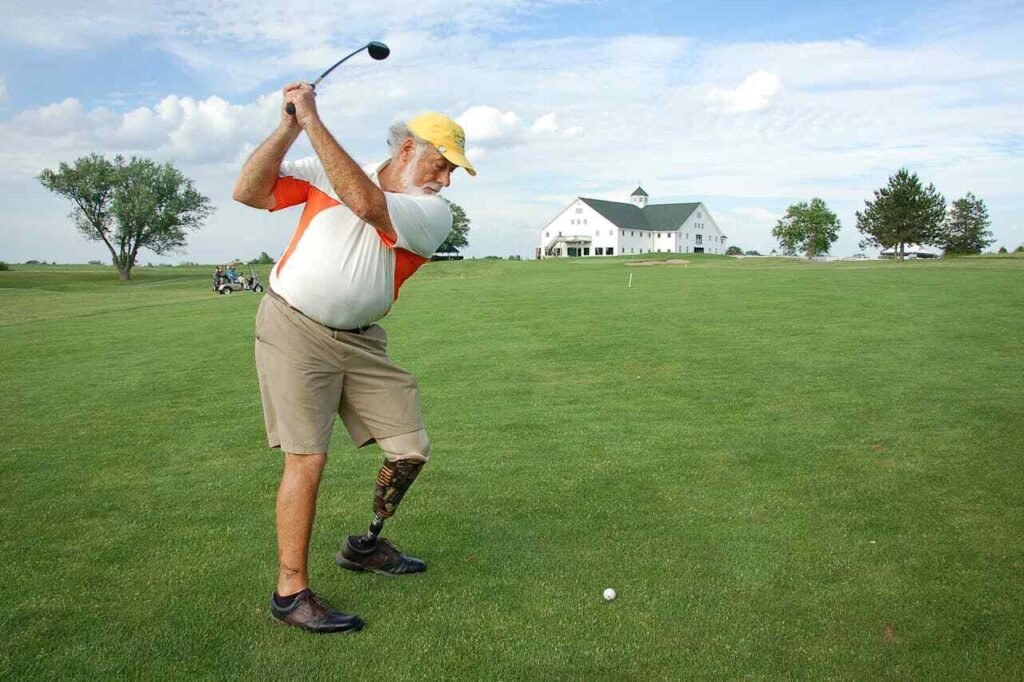
When choosing a prosthetic for Indian summers, it’s important to understand the difference between waterproof and water-resistant.
A waterproof prosthetic hand can be fully submerged in water without damage. It’s ideal for activities like washing utensils, gardening, swimming, or even getting caught in heavy rain. These designs use sealed components and moisture-proof materials that completely block water entry.
A water-resistant hand, on the other hand, can handle sweat, light splashes, and humid air but not full immersion. This type is perfect for daily life in hot climates—especially for working professionals and outdoor users.
Knowing which one suits your lifestyle helps you make a practical, long-term investment.
Material Science Behind Waterproofing
The materials used in a prosthetic determine how it performs under heat and moisture. In waterproof prosthetics, all internal structures are made from corrosion-resistant alloys and polymer composites.
Rubberized seals are placed at joints and openings to prevent water from entering. Silicone and polyurethane are common in gloves and outer coverings because they resist both sweat and dust.
These materials are lightweight yet strong, making them ideal for long wear during hot, humid days. They also resist odor buildup and bacterial growth better than standard plastics.
Socket and Liner Technology
The socket is where your body meets the prosthetic, so it plays a major role in summer comfort. Modern waterproof sockets are designed with breathable liners that wick away moisture.
Some advanced sockets even have small ventilation holes or micro-air channels that let sweat evaporate naturally. This prevents slippage and keeps your skin cool throughout the day.
Sweat-resistant liners made from medical-grade silicone or thermoplastic elastomers create a snug fit without trapping heat. They’re soft, skin-friendly, and easy to clean—important for Indian users who deal with long hours of heat exposure.
Silicone Gloves and Protective Coatings
For prosthetic hands, silicone gloves act as the first line of defense. These gloves mimic natural skin tone while protecting internal mechanisms from moisture and dirt.
High-quality silicone gloves are waterproof, flexible, and UV-resistant. That means they won’t crack or fade even after long exposure to sunlight.
Some gloves are coated with anti-sweat or hydrophobic layers that repel water and prevent bacterial growth. These coatings make cleaning easier and maintain hygiene even in humid environments.
The best gloves balance durability with softness, so they look natural while staying strong against daily wear.
Sealed Joints and Internal Protection
Waterproof prosthetic hands have sealed or enclosed joints that prevent moisture entry. In traditional prosthetics, tiny gaps at the finger joints can allow water droplets to seep in, eventually corroding metal parts.
To solve this, modern designs use polymer seals, silicone rings, or precision gaskets. These barriers keep internal wiring and gears completely dry even during washing or sweating.
The outer casing is often seamless, reducing areas where dust and moisture can collect. This not only improves hygiene but also extends the lifespan of the prosthetic significantly.
Electronics and Moisture Protection
In myoelectric prosthetics, waterproofing extends to sensors and battery systems. The control electrodes that detect muscle signals are encased in protective covers made of waterproof polymers.
Batteries are sealed in insulated compartments, with vents that allow air circulation without letting in moisture. Many high-end prosthetic hands even feature IP ratings (Ingress Protection), similar to waterproof smartphones, to indicate their resistance level.
This ensures reliable performance—even if your hand gets wet during daily chores or while walking in rain.
Sweat-Resistant Liners and Fabric Innovations
Not all prosthetic discomfort comes from external water—sometimes, the real problem is internal sweat. That’s where sweat-resistant liners come in.
These liners use moisture-wicking technology, similar to sportswear fabrics. They pull sweat away from your skin and let it evaporate through microscopic channels.
This keeps the socket dry and prevents bacterial buildup. Some liners even have antibacterial or silver-ion coatings for added hygiene, a big advantage in tropical weather.
Sweat-resistant liners are easy to wash and quick to dry, making them perfect for people who stay active throughout the day.
Lightweight Materials for Heat Reduction
Weight plays a huge role in how comfortable a prosthetic feels in summer. Heavier designs trap heat, while lightweight carbon fiber or reinforced polymer models stay cooler.
By reducing weight, the prosthetic exerts less pressure on the socket and skin, allowing better airflow. Lightweight materials also dry faster, which helps in humid climates.
This combination of lightness, durability, and thermal comfort defines the new generation of Indian-weather prosthetics.
Preventing Odor and Bacterial Growth
Waterproof and sweat-resistant prosthetics use materials that don’t absorb moisture. Since bacteria thrive in damp areas, this feature prevents odor and infection.
Some advanced prosthetic gloves are infused with antimicrobial agents that continuously fight bacterial buildup. This keeps the device fresh and reduces the need for frequent cleaning.
Proper ventilation through the socket and liner also helps by allowing air to circulate, maintaining a hygienic and skin-friendly environment.
Durability in Dusty and Humid Conditions
Apart from heat and sweat, dust is another summer challenge in India. It can stick to moist surfaces and damage moving parts. Waterproof prosthetics handle this well, as their sealed designs block both dust and water.
In coastal cities, where humidity remains high throughout the year, corrosion resistance becomes crucial. Stainless steel or titanium-based internal structures prevent rusting and ensure long-term durability.
For Indian conditions, waterproof prosthetics aren’t just seasonal—they’re practical year-round.
Practical Use and Maintenance Tips for Waterproof Prosthetic Hands in Indian Summers
Daily Routines for Comfort and Care
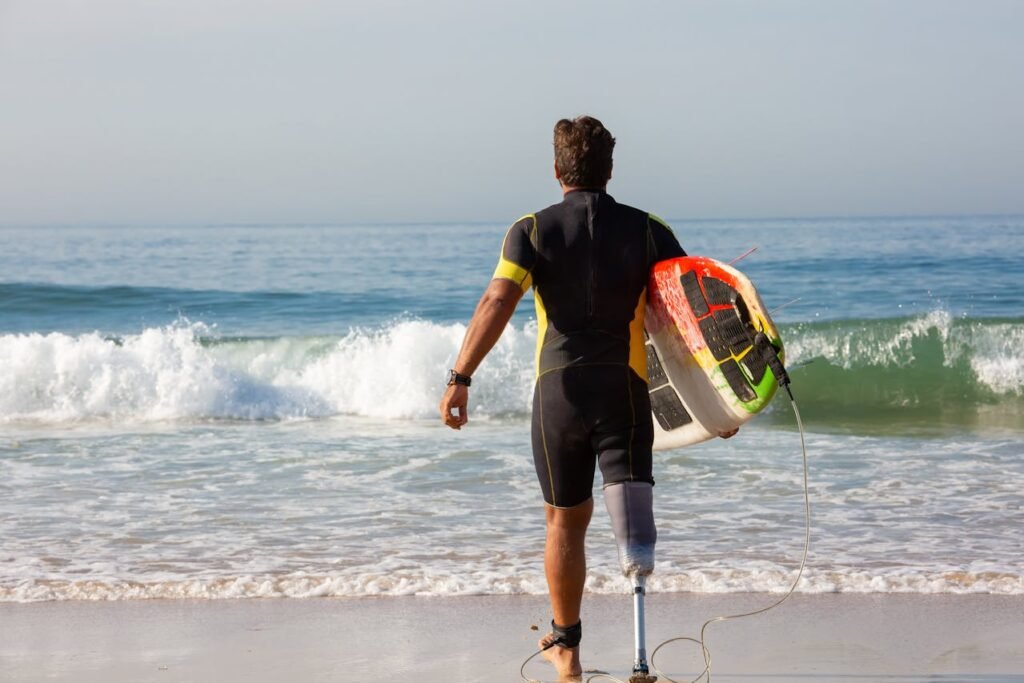
The key to staying comfortable with a prosthetic in summer lies in a simple daily routine. Begin your day by ensuring both your limb and liner are completely dry before you wear the prosthetic. Even slight moisture can cause friction during movement.
If you plan to spend long hours outside, carry a soft towel or tissue wipes to dry your residual limb whenever needed. Lightly cleaning your socket and glove at night prevents bacteria buildup and keeps the materials fresh for the next day.
Think of your prosthetic like skincare—it performs best when kept clean, cool, and dry.
Preventing Sweat Accumulation
Sweat control starts with choosing the right liner. Silicone or thermoplastic liners that wick away moisture are ideal for Indian conditions. They absorb little sweat, dry quickly, and don’t trap heat inside the socket.
You can also use prosthetic-friendly antiperspirant sprays or powders, applied gently to the limb before wearing the socket. These help reduce excessive sweating without affecting grip or skin health.
Avoid using talcum powder directly inside the socket—it can form residue that clogs vents or attracts bacteria. Instead, focus on breathable fabrics and well-ventilated liners.
Cleaning the Socket and Inner Surfaces
During summer, the socket should be cleaned more frequently than in cooler months. A simple wipe with a damp cloth and mild soap is usually enough to remove sweat and oil.
Avoid soaking the socket in water unless it’s specifically waterproof. For waterproof models, you can rinse gently but ensure it’s completely dry before reattaching.
Using a soft, absorbent cloth to wipe the inner surface keeps the fit snug and prevents slippery movement caused by sweat.
Caring for Waterproof Silicone Gloves
Waterproof prosthetic gloves can handle moisture, but that doesn’t mean they don’t need care. After exposure to water or sweat, rinse them lightly and pat dry with a towel. Avoid drying them under direct sunlight for long hours, as strong UV rays can reduce elasticity over time.
If you use your prosthetic for daily chores like washing dishes or gardening, ensure the glove remains free from detergent or chemical residues. These can cause discoloration or weaken the material.
A quick clean at the end of each day ensures that the glove maintains its softness and natural finish.
Maintaining Electronic Components Safely
If you use a myoelectric prosthetic, be cautious with water exposure—even if it’s rated water-resistant. Always check the manufacturer’s IP rating to understand its limits.
For fully waterproof electronic prosthetics, gently wipe away surface water after exposure. Do not open sealed battery compartments or ports unless you’re sure the device is completely dry.
If your prosthetic uses rechargeable batteries, store them in a cool, dry place away from direct sunlight to avoid overheating during Indian summers.
Storage During Hot Weather
Proper storage protects your prosthetic from unnecessary wear. When not in use, keep it in a shaded, well-ventilated area. Avoid leaving it inside a parked car or near a heat source, as high temperatures can damage seals and soften adhesives.
Use a soft cloth or breathable pouch for covering it. Never store the prosthetic in airtight plastic bags, as trapped humidity can create unwanted moisture inside.
For long-term care, occasional socket inspections by your prosthetist can help ensure that seals and fittings remain in good condition.
Protecting Against Humidity and Rain
India’s summer often overlaps with the monsoon season. For coastal regions and cities like Mumbai, Chennai, or Kochi, constant humidity poses an extra challenge.
If your prosthetic is not fully waterproof, avoid prolonged exposure to rain. Carry a lightweight waterproof sleeve or plastic cover in your bag—it can quickly protect your prosthetic during sudden showers.
After coming indoors, remove the cover and dry the prosthetic thoroughly to prevent trapped moisture. Regular care during monsoons can prevent rust, odor, and electrical malfunction.
Managing Odor and Hygiene Naturally
Even with sweat-resistant designs, some odor can develop after long days. Instead of using perfumes or sprays, try mild, unscented antibacterial wipes for cleaning.
For natural odor control, use diluted apple cider vinegar or mild disinfectant wipes once a week. Rinse with plain water afterward to remove any residue.
Good ventilation during storage is equally important. Keeping the prosthetic in open air for short periods after cleaning helps it stay fresh and odor-free.
Staying Active and Confident in the Heat
Hot weather often makes users reluctant to wear their prosthetic for long periods. But avoiding it completely can reduce muscle strength and affect posture. Instead, plan your activities wisely.
Take short breaks during the day to remove your prosthetic, dry your limb, and let your skin breathe. Choose early morning or late evening hours for outdoor work when temperatures are lower.
Light clothing made of cotton or linen helps the skin around your prosthetic stay cooler. Loose sleeves also allow better ventilation, reducing sweat accumulation around the socket.
Regular Maintenance and Checkups
Even waterproof prosthetics need regular servicing. Heat and moisture can loosen fittings or affect internal grip systems over time.
Scheduling periodic checkups with your prosthetist helps maintain optimal performance. They can inspect for minor wear, replace seals, and adjust alignment to ensure your prosthetic continues functioning smoothly.
Regular servicing also keeps your warranty valid and extends the overall lifespan of your device.
Psychological Comfort and Routine Adaptation
Physical care is only part of the equation. Psychological comfort plays an equal role during summer. Many users feel irritated or anxious when their prosthetic feels warm or sticky.
It helps to view maintenance as part of self-care. Keeping your prosthetic clean, cool, and functional is not just technical—it’s emotional reassurance that you’re in control.
With time, these routines become second nature, making each summer easier than the last.
Choosing the Right Waterproof and Sweat-Resistant Prosthetic Hand for Indian Lifestyles
Matching Prosthetics to Daily Routines
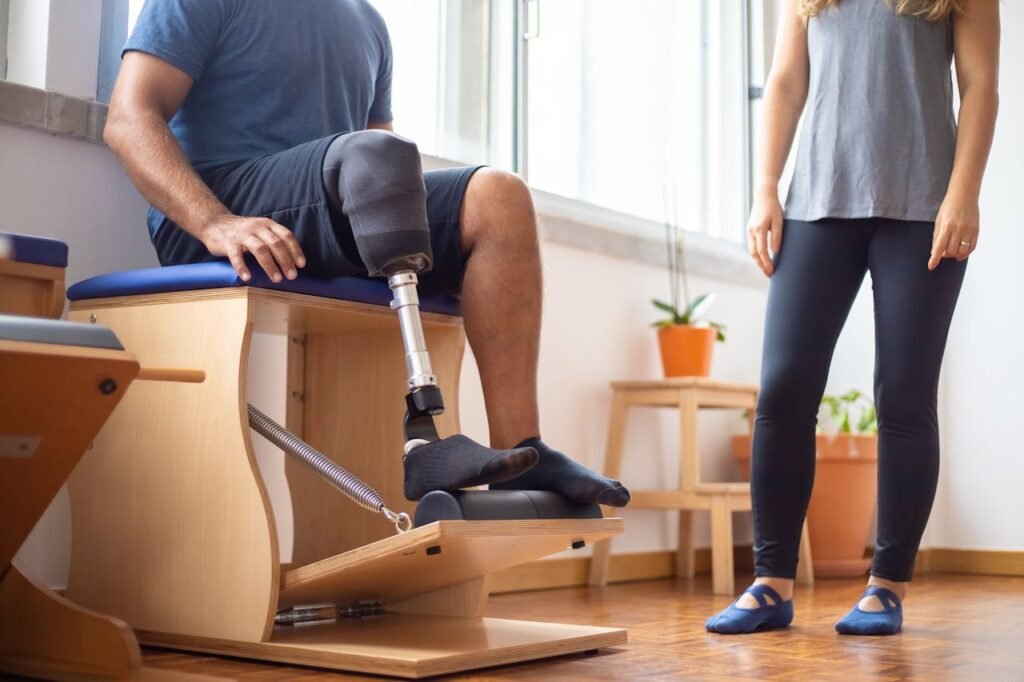
Every person’s lifestyle shapes how their prosthetic should perform. For some, daily routines involve office work or typing; for others, it’s household chores, outdoor activities, or travel.
When you live in India, your prosthetic must not only fit your body—it must fit your lifestyle and your environment. Summers are long, temperatures fluctuate across states, and humidity can change from morning to evening.
A waterproof and sweat-resistant prosthetic hand helps bridge all these conditions. It gives you the freedom to cook, clean, commute, and work without worrying about moisture damage or constant readjustments.
Before choosing one, it helps to evaluate how you move through your day—your work, mobility, climate, and comfort preferences.
Prosthetics for Active Users
If you lead an active lifestyle or enjoy outdoor tasks, durability and full waterproofing matter most. Activities like gardening, exercising, or even playing light sports require a prosthetic that can handle sweat, dust, and water exposure.
For such users, fully waterproof prosthetic hands with sealed joints and corrosion-resistant components are ideal. Their silicone gloves can withstand both rain and washing, while internal gaskets protect mechanical parts from humidity.
These prosthetics are also easier to clean—just rinse, wipe, and dry. For users in India’s coastal or rural regions, this kind of low-maintenance reliability makes all the difference.
Prosthetics for Office and Professional Use
For professionals, sweat resistance is usually more important than full waterproofing. Long hours in an office environment mean comfort, ventilation, and skin health take priority over complete submersion protection.
Sweat-resistant liners and breathable sockets keep the arm cool, especially in air-conditioned settings where humidity fluctuates. Myoelectric hands with sealed sensors can handle moderate perspiration without losing grip precision.
In urban cities like Delhi, Bengaluru, or Pune, where summers are hot but mostly dry, these prosthetics perform exceptionally well—balancing elegance, comfort, and reliability.
For Homemakers and Daily Use
For homemakers, a prosthetic must adapt to frequent washing, cooking, and household activities. Tasks like rinsing vegetables, wiping surfaces, or dealing with steam can expose prosthetics to constant moisture.
Waterproof designs with silicone gloves and splash-resistant joints make everyday chores easier. They allow users to handle damp tasks freely, without the fear of internal damage.
Lightweight construction ensures that long hours of wear don’t cause fatigue, even in humid kitchens or non-air-conditioned homes.
For Students and Young Users
Younger users need prosthetics that are both strong and comfortable. For them, waterproofing means freedom—freedom to study, travel, or enjoy campus life without worrying about weather or sweat.
Durable, easy-to-maintain prosthetics are ideal. Breathable liners and quick-dry sockets reduce odor buildup after long school or college days.
In India’s educational settings, where movement and physical activity are constant, sweat-resistant technology makes wearing a prosthetic feel natural and carefree.
Importance of Skin Compatibility
In tropical climates, skin comfort is as important as mechanical strength. A waterproof prosthetic that irritates the skin is just as limiting as a non-functional one.
Modern designs use hypoallergenic silicone, flexible thermoplastic elastomers, and antimicrobial coatings to prevent rashes and friction burns.
If you have sensitive skin or a history of irritation, choose liners and sockets that are dermatologically tested. Some advanced sockets even include replaceable inner sleeves to maintain hygiene during long summer months.
Custom Fitting for Climate Adaptation
No two prosthetic users have the same fit. Heat and humidity can slightly change your limb volume, which affects how tightly the socket fits.
A good prosthetist will measure and adjust your socket to allow gentle airflow while maintaining secure attachment. Small vents or breathable inner layers can make a major difference in comfort.
Custom fitting ensures that your prosthetic feels stable and natural even when temperatures rise or when you sweat more than usual.
Weight and Balance Considerations
In high temperatures, heavier prosthetics can feel tiring. The extra weight traps heat, and prolonged use can lead to shoulder or neck discomfort.
Modern waterproof prosthetics made from carbon fiber or reinforced polymers are lightweight and balanced. They maintain strength while reducing overall load, which is especially helpful for petite users or those who wear their prosthetics for long hours.
Lighter designs also improve posture and reduce strain on your residual limb.
Battery and Power Efficiency in Summer
For myoelectric prosthetics, battery life becomes a key consideration. Heat drains energy faster, and high humidity can interfere with electronic efficiency.
Prosthetics built with temperature-resistant batteries perform better in Indian summers. Some even include thermal regulators that prevent overheating.
When choosing one, ask your prosthetist about power efficiency ratings and ideal charging habits for your climate. Proper maintenance ensures uninterrupted performance during busy summer schedules.
Waterproofing Grades and IP Ratings
Waterproof and water-resistant devices are often labeled with IP (Ingress Protection) ratings, such as IPX4, IPX6, or IP68.
These numbers indicate how much water exposure the device can handle. For example, an IPX4-rated prosthetic can resist light splashes, while an IP68-rated one can handle full submersion.
In India, IPX6 or IPX7 ratings are ideal—they offer enough protection for heavy sweating, monsoon rains, and occasional washing without compromising electronics.
Knowing these grades helps you make informed decisions about where and how you can safely use your prosthetic.
Climate-Based Recommendations Across India
India’s diverse geography means prosthetic performance needs can vary by region.
In northern cities like Delhi or Jaipur, dry heat means high sweat evaporation but frequent dust exposure. Dust-proof and water-resistant designs are ideal here.
In southern and coastal regions like Chennai, Kochi, or Mumbai, humidity and constant rain demand full waterproofing and corrosion-resistant materials.
Meanwhile, hill regions like Himachal Pradesh or Shillong have cooler climates, where sweat-resistant liners and light waterproofing are sufficient.
Choosing according to your local climate ensures comfort and longer prosthetic life.
Lifestyle Integration and Adaptability
A waterproof prosthetic isn’t just for summer—it’s an all-season investment. It lets you move through India’s unpredictable weather confidently, whether it’s the dry May heat or the sudden July rain.
Look for models that integrate easily into your daily routine. Quick-dry sockets, removable gloves, and simple cleaning mechanisms make maintenance effortless.
The right prosthetic should feel like an extension of your body, not an extra device that demands constant care.
Aesthetic Options for Everyday Wear
Today’s waterproof and sweat-resistant prosthetics don’t compromise on appearance. Silicone gloves come in various skin tones, matching Indian complexions naturally.
For those who prefer a modern look, transparent or metallic finishes are available, blending style with durability.
You can even accessorize your prosthetic with wristbands or covers made from breathable materials. These not only enhance appearance but also protect against direct sun exposure.
Fashion and function now go hand in hand, helping users express confidence through their design choices.
Long-Term Value and Cost Efficiency
A waterproof prosthetic may cost slightly more initially, but it saves money in the long run. Because it resists corrosion, sweat damage, and bacterial buildup, it needs fewer repairs and replacements.
In India’s climate, this reliability adds years to your device’s life. It also ensures comfort that non-waterproof models can’t match during extreme summers.
Think of it as an investment—not just in a prosthetic, but in freedom from constant discomfort and maintenance.
Emotional Confidence and Practical Freedom
The most valuable benefit of a waterproof prosthetic is emotional freedom. Knowing that you can wash your hands, go out in the rain, or handle daily chores without worry builds confidence.
It eliminates hesitation and helps users reconnect with daily life—without fear of damage or embarrassment.
Confidence grows when your prosthetic feels effortless, when it supports your pace rather than limits it. That’s exactly what sweat-resistant and waterproof prosthetics are designed to deliver.
The Robobionics Approach to Indian Summers
At Robobionics, every prosthetic we design is built with India’s unique conditions in mind. We understand that Indian summers test not only endurance but also patience.
Our focus lies in combining global innovation with local adaptability—materials that resist humidity, sockets that stay cool, and hands that perform reliably in daily life.
From body-powered prosthetics to advanced myoelectric systems, each design undergoes rigorous testing in real Indian weather. The result: prosthetic hands that don’t just survive the summer—they thrive in it.
Final Thoughts
Waterproof and sweat-resistant prosthetic hands are more than a technological improvement—they’re a lifestyle transformation. They turn hesitation into confidence, discomfort into comfort, and dependency into independence.
For Indian users, these designs are not a luxury—they are a necessity for living fully in the country’s demanding weather.
When your prosthetic hand moves seamlessly through heat, humidity, and monsoon rains, it’s no longer just a device. It becomes a trusted companion—resilient, dependable, and ready for every season of life.



